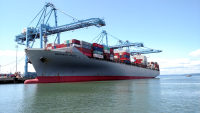
The last few years have shown us that when distribution chains are disrupted, the effects on the business can be huge, impacting on the inwards supply chain delivering key raw materials components to the business to manufacture their goods, or delivering finished goods for the business to on-sell.
The parameters of the supply chain will vary depending on the business yet for a portion of businesses the supply chain might be critical for the business to be able to manufacture and provide its goods to the market.
The supply chain providing the business could have a number of stages to maneuver from the point of source to the business receiving its goods and the lead times to receive the goods may require some forward ordering depending on the demand at the source and the type of logistics used to transport the goods (e.g. train, ship airliner, trucks and others).
Availability of logistics might impact on delivery times due to various delivery criteria and environmental conditions as were experienced during the pandemic period. The national constraints or global logistics demands may be high with a range of unexpected logistics disruptions possibly occurring causing delivery delays, such as ships being diverted to other countries or offshore manufacturing plants being closed.
The business may have enough finished goods to supply market demand yet the outwards goods supply chain may have similar hurdles to consider, depending on how the business connects with the market. The national distribution network may have movement restrictions, have a lack of staff, or other hurdles to overcome, and international distribution networks may be hindered by port restrictions.
During the pandemic, shipping deliveries became a bottle neck through restrictions, as many businesses found that parts components as well as finished goods were much reduced in supply. When ships realised the waiting times for unloading in NZ had become much longer, the shipping companies chose to redirect a portion of their ships elsewhere, increasing the severity of supply shortages, including the lack of replenishing the refrigerated container stock, which in turn restricted NZ primary goods producers in exporting their primary goods. The flow-on effect was quite damaging to many NZ business entities and some are still recovering for the event.
If the business is a retail outlet and is selling its goods directly to the consumer via its outlets, the outward supply chain is somewhat minimal, yet if the business is selling its goods online, or made to order as a wholesale provider or a contracted high user customer, there may be several outward distribution steps to manage in reaching the consumer.
The pandemic has highlighted that contingency planning of being able to access raw materials alternative suppliers is paramount to the continuity of many businesses. In recent years the trend has been toward importing less expensive goods to NZ rather than manufacturing in NZ. The importation model works well until something happens offshore that hinders the import distribution flow, indicating that an alternative supply of goods is an important element of a business model.
To ensure the business doesn’t become restricted in its operations through third party distribution systems, the business should include its continuity strategy in the business plan, allowing the business to switch to the alternative distribution systems whenever distribution hurdles occur.
Having a contingency strategy documented in a business plan to indicate what the distribution supply chain looks like from sourcing raw materials through to point of sale, with alternative distribution channels, is critical to business continuity for many businesses.
If you would like any further Business Consulting information or support in the understanding of the documenting a Business Plan, or you seek support in working through how to “Getting the Goods to Market” please contact us through www.activebss.co.nz/contact or noel@activebss.co.nz or get a copy of the book ‘Getting Back to Business for SMEs’ via the link: https://amzn.asia/d/083KG2u

A guide for business owners
to reach their aspirations.
A business plan is your most valuable asset.
 Noel Rodgers MBA – CMC
Noel Rodgers MBA – CMC
Business Advisor
For further information on this subject please email Noel Rodgers
E noel@activebss.co.nz M 0274 775583
OTHER POSTS FROM NOEL RODGERS
